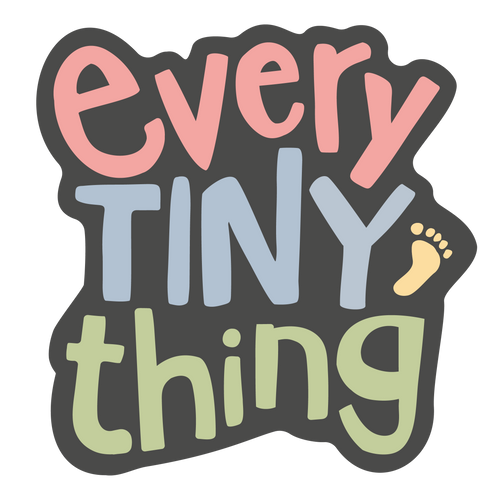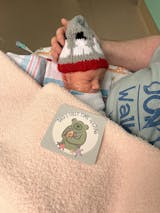
September is NICU Awareness Month, and we’re doing our part to raise awareness and understanding by creating a simple NICU primer!
Many of our Every Tiny Thing friends have experienced the NICU personally, but for those who haven’t, the terms can get a little confusing. We’re breaking down the basics to help grandparents, friends, aunts, uncles, and even expectant parents know exactly what goes on behind the doors of the NICU!
What is a NICU?
NICU stands for Neonatal Intensive Care Unit. Newborns who are born prematurely or critically ill babies stay in the NICU until they are strong and healthy enough to be discharged.
What Do NICUs Look Like?
Some NICUs have an open floor plan with all the babies in the same room, others have individual rooms for each patient.
Many NICU babies sleep in isolettes- closed incubators that reduce sound and keep infants warm and quiet to facilitate growth and healing. But all babies transition to open cribs once they are able to regulate their body temperature.
It can be noisy in the NICU, with alarms ringing, ventilators chugging along, oxygen machines bubbling, and lots of people talking. And of course there are the babies - those bigger babies can definitely be heard expressing their opinions!
What’s All that Equipment for??
NICU Monitors
A NICU baby’s breathing and heart rate are monitored by a monitor with small wires that are placed on their chest. A pulse oximeter measures oxygen levels in the blood, and it’s attached to tiny hands or feet with a soft Velcro strip.
Tubes
Babies who need extra help with breathing in the NICU may be intubated or receive supplemental oxygen from a Continuous Positive Airway Pressure (CPAP) mask.
IV lines or PICC lines deliver fluids and medications intravenously.
Feeding tubes can be placed in the nose or mouth to deliver nutrition directly to an infant’s stomach until they’re ready for bottle or breastfeeding.
There is so much more equipment that we use every day in the NICU, but these basics are used with nearly every baby while they’re in the hospital.
Who’s Taking Care of the Baby?
Each baby has a full support team led by a neonatologist- a doctor who specializes in caring for premature and critically ill babies. In some facilities, a Neonatal nurse practitioner works closely with the neonatologist to perform procedures and direct baby’s care. Registered nurses perform all bedside care and usually have the most direct contact with families.
Many NICU babies receive additional support from respiratory therapists, physical and occupational therapists, and even speech therapists!
Why Can’t More Friends & Family Visit Babies in the NICU?
It can be SO hard to wait to meet the newest little bundle of joy! But it’s important to remember that the NICU is an intensive care unit, and that means the patients are fragile, needing to heal. Every effort has to be made to keep babies safe.
Any baby who is premature enough or sick enough to need the NICU is also fragile enough that they need rest. Excess stimulation interferes with growth and healing.
Plus, infection is a very real risk to all newborns, particularly those who are sick or preemie. So the NICU limits visitors to only those who are absolutely essential - staff and parents (or caregivers).
Understanding what goes on behind the scenes is a wonderful way to support the NICU family in your life. If you’d like to learn more about common NICU terms, here’s a link to a great glossary! And for my personal perspective on what it’s really like to experience the NICU, here’s another post written years ago called The Reality of the NICU.

